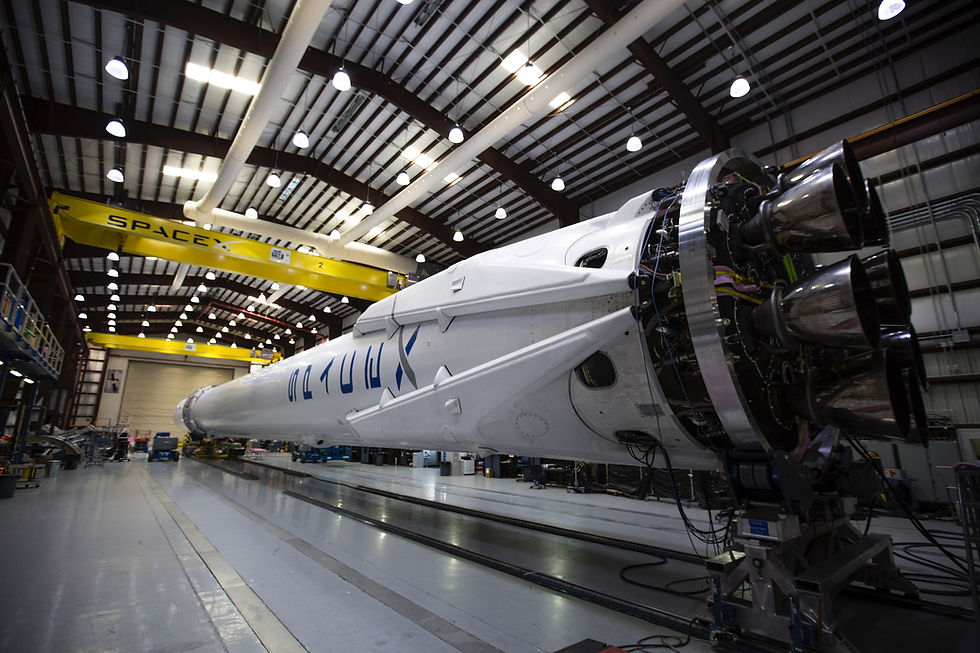Let's resume a format we started some time ago and dive into the lives of scientists, engineers and space professionals that contributed or are contributing to the development of humanity towards Space.
SpaceX, the aerospace manufacturer and space transportation company founded by Elon Musk, has become synonymous with innovation and pushing the boundaries of space exploration. While Elon Musk is the face of the company, there is another key figure whose contributions have been instrumental in SpaceX's success – Tom Mueller. As the co-founder and former Vice President of Propulsion Engineering at SpaceX, Mueller played a crucial role in developing the cutting-edge rocket technology that has revolutionized space travel.
Early Life and Education
Born on June 30, 1958, in St. Maries, Idaho, Tom Mueller's fascination with rockets and space exploration began at a young age. His journey into the world of aerospace engineering started with his education. Mueller earned his Bachelor's degree in Mechanical Engineering from Loyola Marymount University in Los Angeles in 1982. Following that, he continued his studies at Loyola Marymount University, obtaining a Master's degree in Mechanical Engineering in 1985.

Early Career
Mueller's professional career in aerospace engineering began at TRW, a leading space and defense contractor. If you don't know this company yet, give a look at our article about it!
During his time at TRW, he gained valuable experience working on various propulsion projects, contributing to the development of rocket engines and systems. His expertise and dedication quickly caught the attention of industry experts, setting the stage for his future endeavors.
Joining SpaceX
In 2002, Elon Musk founded SpaceX with the ambitious goal of reducing space transportation costs and ultimately enabling the colonization of Mars. Recognizing the need for a seasoned rocket scientist to lead the propulsion team, Musk brought Tom Mueller on board in the same year. Mueller's extensive experience and innovative mindset made him the perfect candidate to tackle the challenges of designing efficient and cost-effective rocket engines.
Role at SpaceX
As the Vice President of Propulsion Engineering, Mueller was responsible for overseeing the design and development of the rocket engines that power SpaceX's Falcon 1, Falcon 9, and Falcon Heavy launch vehicles. His leadership played a pivotal role in the success of SpaceX's early missions, as the company achieved milestones like the first privately-funded, liquid-fueled rocket (Falcon 1) to reach orbit in 2008.
One of Mueller's most significant contributions was the development of the Merlin engine, which powers the Falcon 1 and Falcon 9 rockets. The Merlin engine's innovative design and use of advanced materials significantly contributed to SpaceX's ability to offer cost-effective and reliable launch services. Mueller's team also worked on the development of the Kestrel and Draco engines, enhancing the versatility of SpaceX's rockets for different mission profiles.
Challenges and Triumphs
SpaceX faced numerous challenges during its early years, and Mueller played a crucial role in overcoming technical obstacles. From the intricacies of rocket engine design to the complexities of space travel logistics, Mueller's engineering prowess and problem-solving skills were indispensable. His ability to lead a dedicated team of engineers and technicians through the iterative process of testing, refinement, and innovation helped SpaceX achieve remarkable successes.
The Falcon 9's first stage reusability, a groundbreaking concept that would eventually redefine the economics of space travel, owes much to Mueller's engineering expertise. The development of the Falcon 9 Reusable (F9R) marked a significant milestone, demonstrating that the first stage of a rocket could be recovered, refurbished, and reused for multiple launches.
Mueller's contributions were not limited to the success of the Falcon rockets. He also played a pivotal role in the development of the SuperDraco engines, which are part of the Crew Dragon spacecraft's launch escape system. This crucial safety feature ensures the rapid evacuation of astronauts in the event of an emergency during launch.
Departure from SpaceX
After more than a decade of groundbreaking work at SpaceX, Tom Mueller left the company in 2019. His departure marked the end of an era, but his legacy continued to influence the aerospace industry. Mueller's innovative approaches to propulsion technology and dedication to cost efficiency have left an indelible mark on SpaceX's culture of pushing boundaries and redefining what is possible in space exploration.
Legacy and Impact
Tom Mueller's legacy at SpaceX extends beyond the specific rocket engines and technologies he helped develop. His work laid the foundation for the company's ongoing missions, including the ambitious Starship project aimed at enabling human exploration and colonization of Mars. The lessons learned under Mueller's leadership continue to shape the way SpaceX approaches challenges, fostering a culture of innovation and resilience.
Beyond his impact at SpaceX, Mueller's career has inspired a new generation of aerospace engineers and enthusiasts. His story serves as a testament to the power of curiosity, dedication, and a relentless pursuit of excellence in the face of seemingly insurmountable challenges.
Conclusion
Tom Mueller's journey from a young enthusiast with a passion for rockets to the co-founder and propulsion visionary at SpaceX is a remarkable tale of innovation and determination. His contributions have played a pivotal role in SpaceX's success, helping the company achieve milestones that were once considered unattainable. As the aerospace industry continues to evolve, Tom Mueller's legacy serves as a guiding light for those who strive to push the boundaries of human exploration and redefine the possibilities of space travel.

Comments